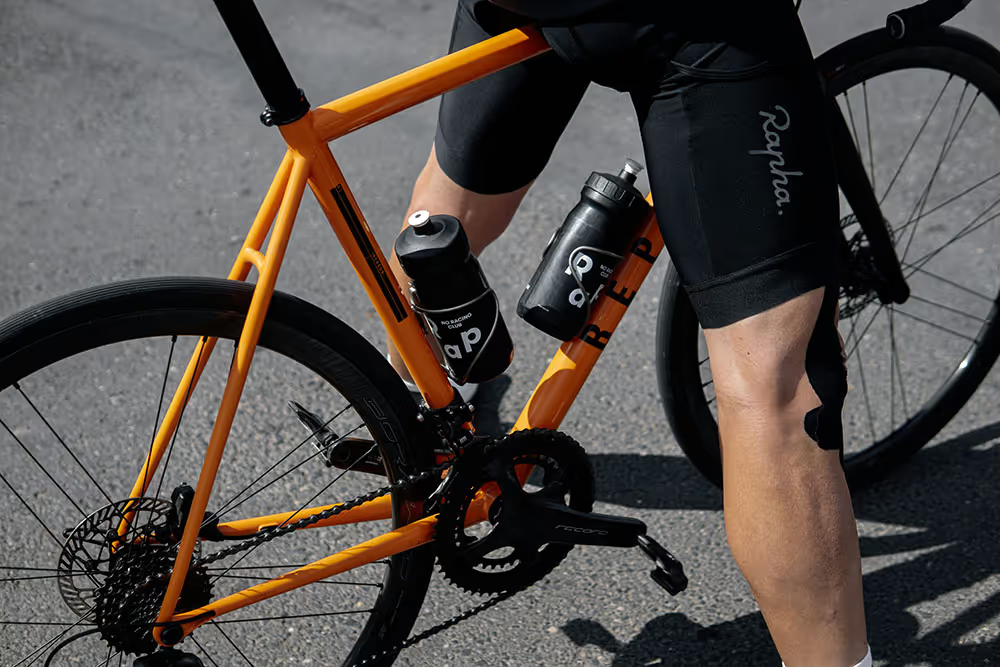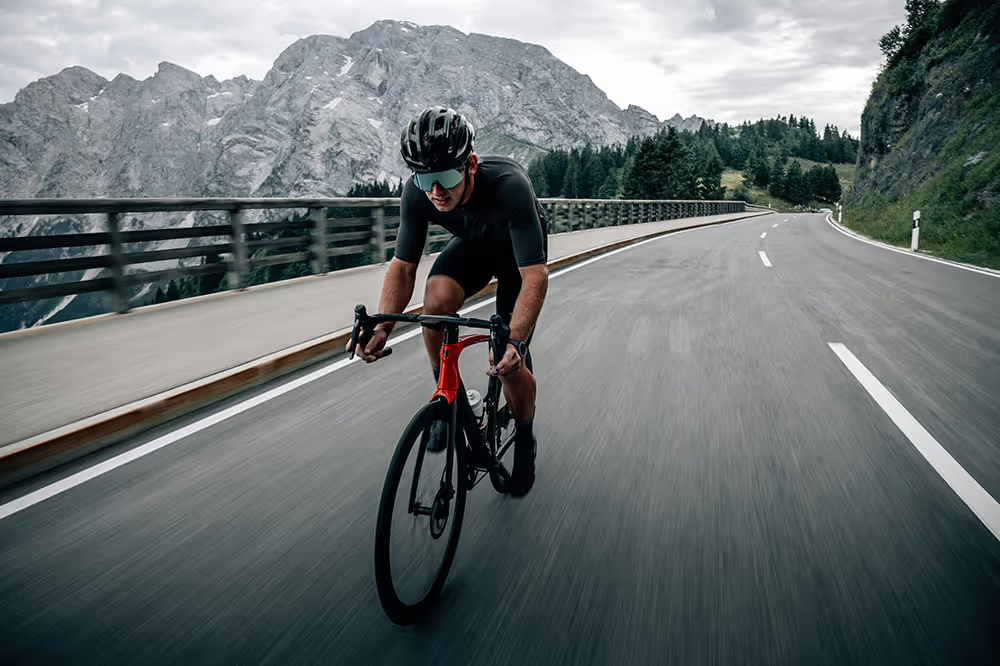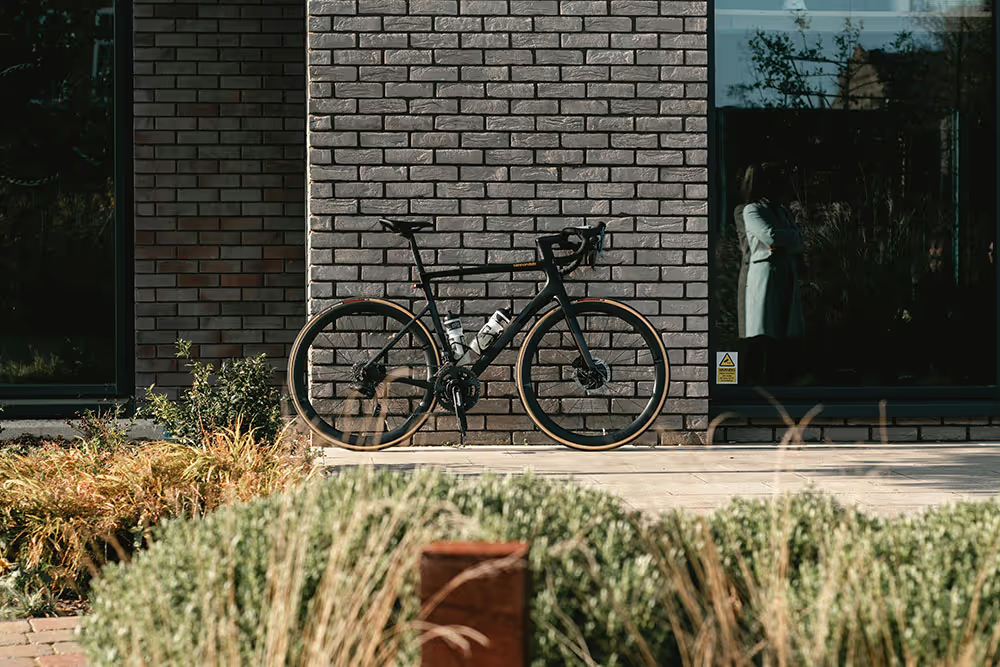So, you’ve bought a road bike. It’s probably leaning against the wall right now. It looks fast, maybe a little intimidating. You’ve got the shoes, the helmet, maybe a pair of padded shorts and a vague sense that cycling is “supposed to be good for you.” But now what?
If you’ve not ridden a bike in years, or ever done anything more than pedal to the corner shop as a kid, this guide is for you. And if you're returning to cycling after a long break, this will still help. No nonsense, no complicated gear talk, no Lycra snobbery. Just real advice that works for beginners of any age.
The Basics: What You Just Bought
First off, don’t worry if your new road bike feels a bit alien. They’re light, responsive, and faster than anything you’ve probably ridden before. The tyres are narrow, the riding position leans you forward, and there are a lot of gears to figure out. It’s all a bit much at first — but give it time.
If you bought from a local shop, you might have had a quick fit and setup already. If not, here are three things you should check right away:
- Saddle height – When your foot is at the bottom of the pedal stroke, your leg should be almost straight, with just a slight bend in the knee. If you’re rocking side to side on the saddle, it’s too high.
- Reach – You shouldn’t feel like you’re over-stretching to hold the bars. Your elbows should be slightly bent. If you feel cramped or stretched out, it may be worth getting a basic fit from a local bike shop.
- Tyre pressure – Road tyres are meant to feel hard. Check the sidewall for the recommended pressure and pump them up before every ride.
Clipping In (Or Not)
If you’ve got clip-in pedals and shoes, take time to practise in a quiet spot. Most people fall over at least once at traffic lights or junctions when they’re learning. It’s normal. Don’t let it put you off. But if you're really unsure, start with flat pedals and normal trainers. You can upgrade later once you're more confident.
What You Need Before Your First Ride
You don’t need every bit of kit under the sun. But you do need a few essentials:
- Helmet – A proper cycling helmet that fits well and sits snug on your head.
- Cycling shorts – Padded shorts make a huge difference. You wear them with no underwear. Yes, really.
- Jersey or sports top – Something breathable with back pockets for snacks, keys, and your phone.
- Gloves – To protect your hands, improve grip, and cushion road buzz.
- Bottle cages and water bottles – You’ll need at least one. Two if you plan to go out for longer than an hour.
- Saddlebag with spares – One inner tube, two tyre levers, a mini-pump, and a multi-tool. That’s your minimum kit.

How to Ride Safely (And Confidently)
Start somewhere quiet. Cycle paths, parks, back roads with little traffic. You don’t need to go far. The goal is to get used to the handling, the gears, the brakes, and just being on the bike again.
As your confidence builds, you can start riding on the road more. A few tips to help keep you safe:
- Ride about a metre out from the kerb. Don’t hug the edge – it’s full of debris, drains, and potholes.
- Signal your turns with hand signals and always make eye contact with drivers at junctions.
- Ride predictably. Don’t weave in and out of parked cars.
- Use front and rear lights, even during the day. It makes you far more visible.
- Wear bright clothing, especially if it’s cloudy or the light’s poor.
And don’t be afraid to get off and walk if a section of road feels sketchy. You’re not failing. You’re staying safe.
Getting to Grips with Gears
Don’t worry if you don’t use your gears properly at first. Most new riders stay in the same few gears until they start tackling hills or riding longer distances. A few simple rules help:
- Left-hand shifter controls the big rings at the front. Right-hand shifter controls the smaller cogs at the back.
- Shift early when approaching a hill. Don’t wait until you’re halfway up to change gear – it puts stress on the chain.
- Avoid “cross-chaining” – using the biggest ring at the front and biggest cog at the back at the same time. It wears your chain faster.
Gears are your friend. Keep experimenting, and you’ll soon get the hang of it.
How Far Should You Ride?
Start with short rides. Maybe 10 to 15 kilometres. Just a loop from your house and back. Then try 20. Then 30. Then maybe a café ride on the weekend.
You don’t need to be fast. Average speed means nothing when you’re starting. It’s all about comfort, confidence, and enjoying the process.
If you’re aiming for a VeloCamp or a group ride in the future, try to ride two to three times per week, gradually increasing the distance and time in the saddle.
Fuel and Hydration for Beginners
Even short rides require a bit of planning.
If you’re riding under an hour, water is usually enough. Once you go over that, take a snack. Banana, flapjack, jelly babies, whatever you like. Don’t wait until you’re starving. Eat something every 30 to 45 minutes.
Before your ride, have a proper breakfast – porridge, toast and peanut butter, banana smoothie. Avoid sugary cereals or greasy food. After your ride, eat something with carbs and protein to help your recovery.
Hydration is key. Start hydrated, drink little and often, and if you’re sweating a lot, consider adding electrolytes to your water.
What Happens If You Get a Flat?
You fix it. And you will get them. Everyone does.
Here’s what you do:
- Take the wheel off.
- Use tyre levers to remove one side of the tyre.
- Pull out the inner tube.
- Check the inside of the tyre for glass or sharp bits.
- Put in a new tube.
- Tuck the tyre back on.
- Pump it up.
- Get going again.
It sounds tricky, but it’s easier than you think. Practice at home a few times, and you’ll be golden.
Riding With Others
Cycling is way more fun with company. Join a local cycling club or ask around on social media for beginner-friendly group rides. Most clubs have intro groups that go at a steady pace.
Don’t worry about being too slow. Every rider started somewhere. And most of them remember what it was like to be new.
If you join a ride:
- Listen to the ride leader.
- Let someone know if you’re struggling.
- Ride predictably and don’t overlap wheels.
- Be kind, ask questions, enjoy the chat.
Building Fitness and Confidence
It doesn’t happen overnight. But every ride builds your base. Don’t try to hammer every ride. Just ride often. Keep your cadence (pedal speed) smooth. Climb slowly. Descend carefully. Take breaks when you need to.

And rest days are just as important as riding days. Especially when you’re starting out.
Looking Ahead: What Comes Next?
Once you’ve got a few weeks under your belt, you’ll naturally start wanting to go further. Maybe tackle a few climbs. Maybe try a sportive. Maybe even book a training week in Mallorca.
That’s where we come in.
At VeloCamp Mallorca, we take beginners seriously. We don’t just assume everyone’s been riding for years. If you’ve got a bit of base fitness and you’re keen to learn, we’ll guide you through the climbs, the pacing, the skills, and the fuelling. You’ll come back fitter, stronger, and completely hooked.
👉 Book your place now at www.velocampmallorca.com
Come ride with us. Learn the ropes. Eat the cake. And become the cyclist you want to be.








